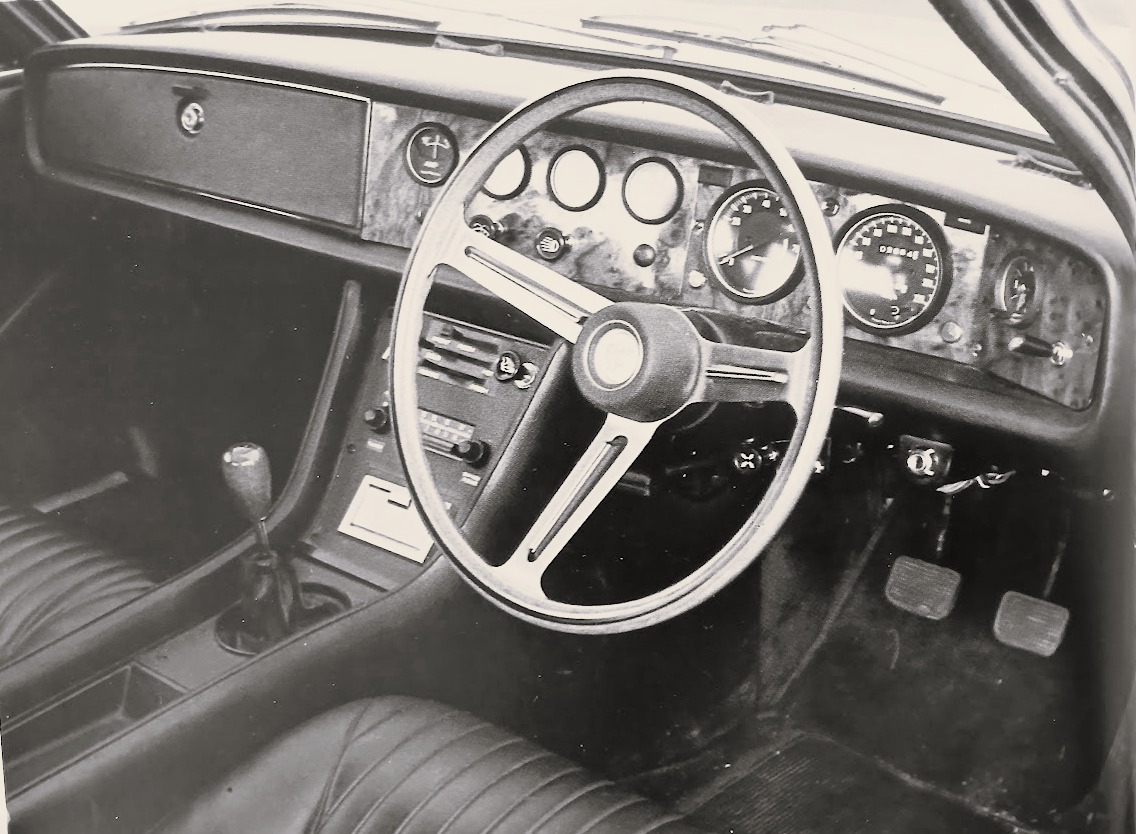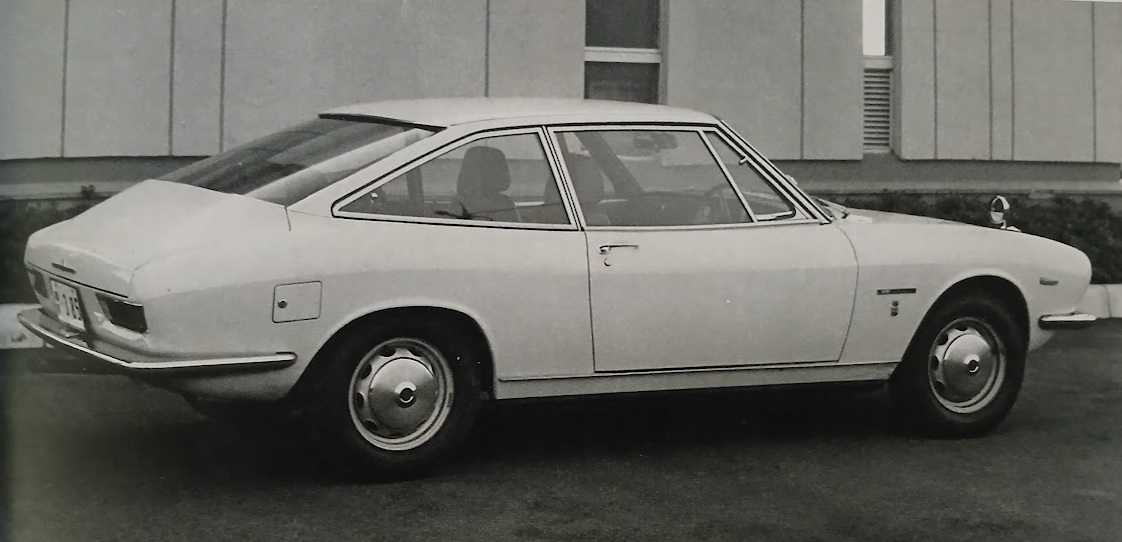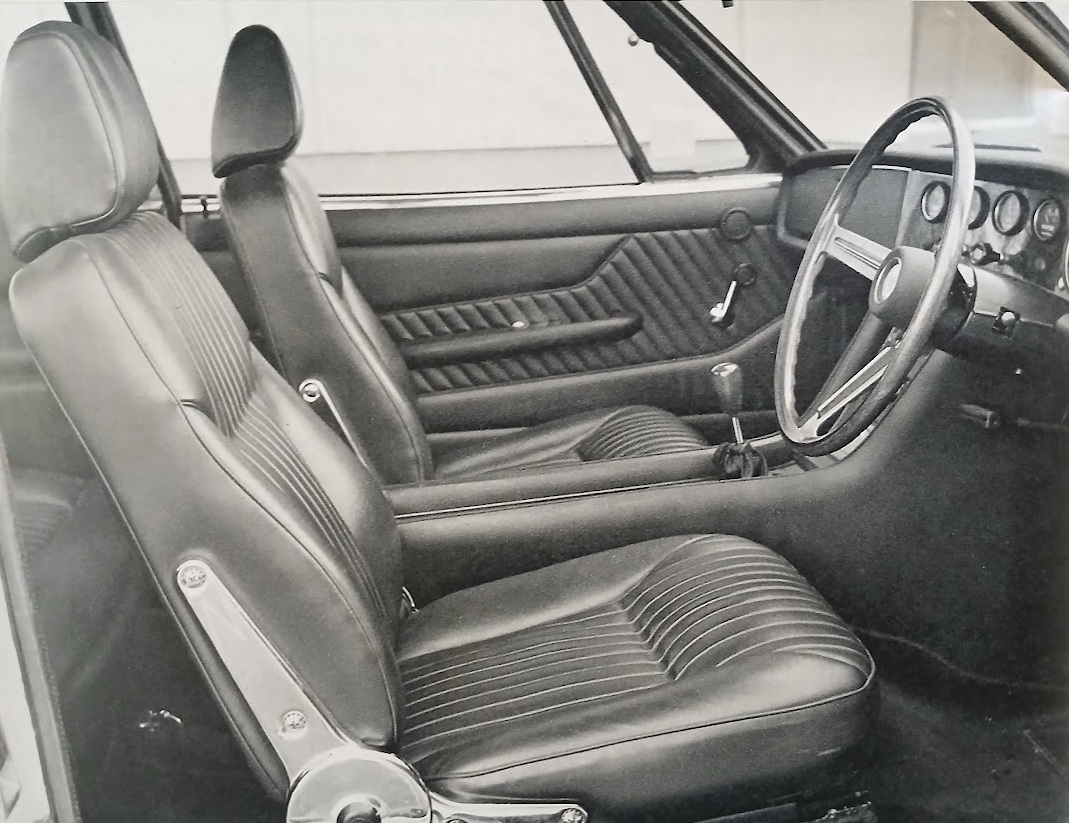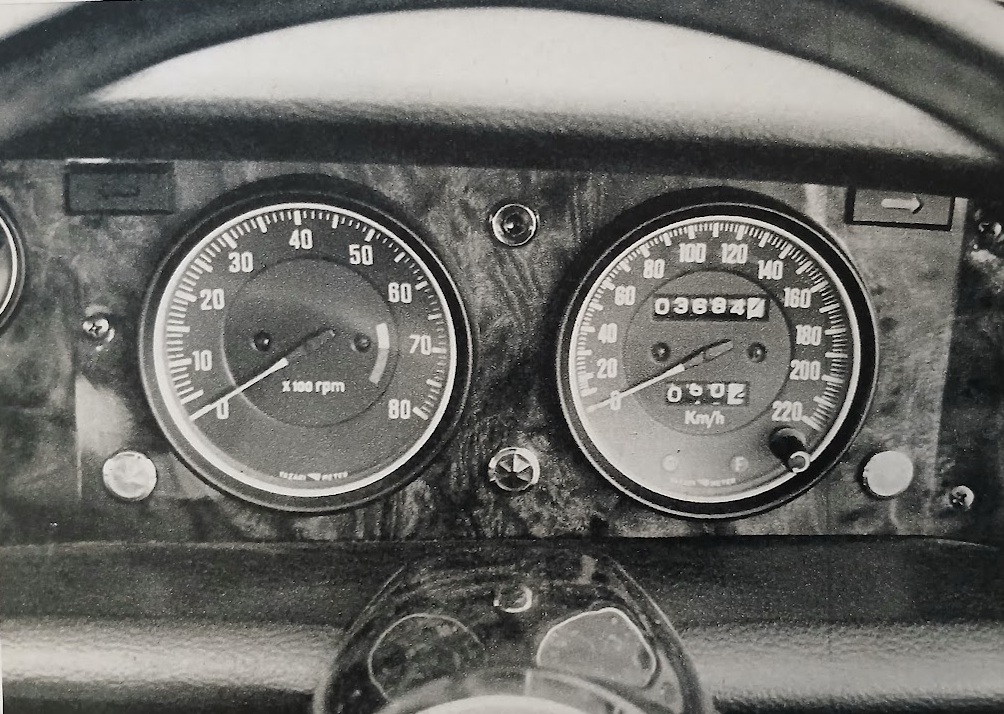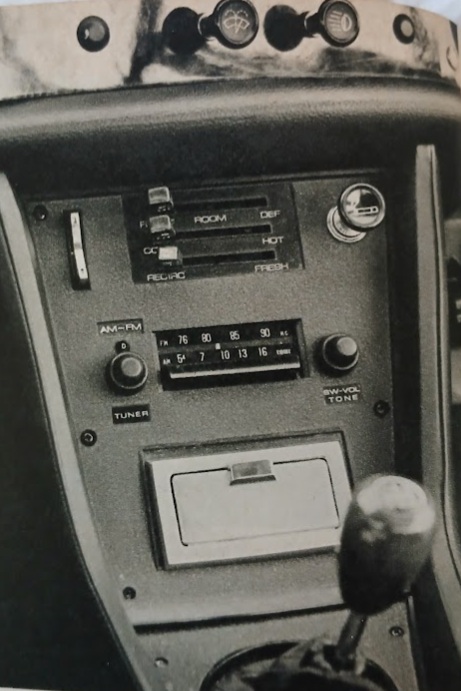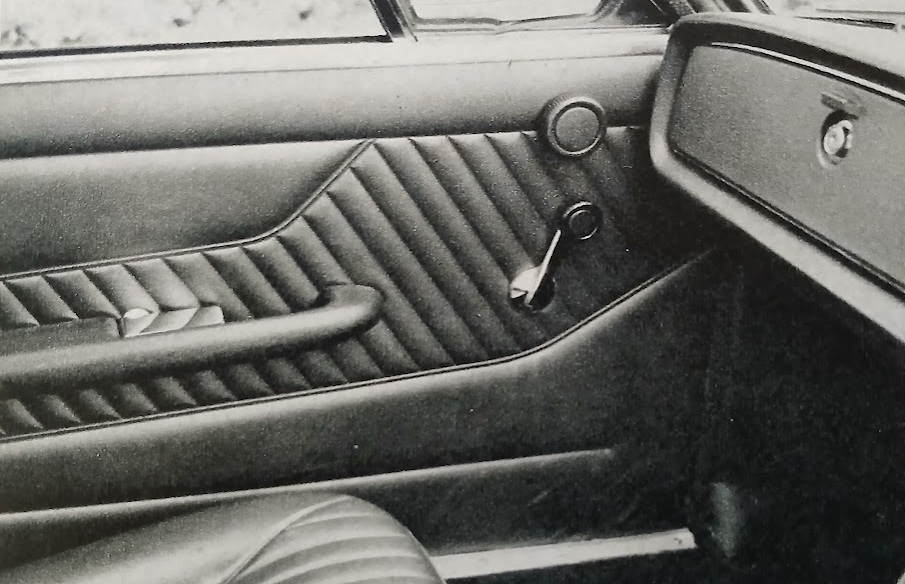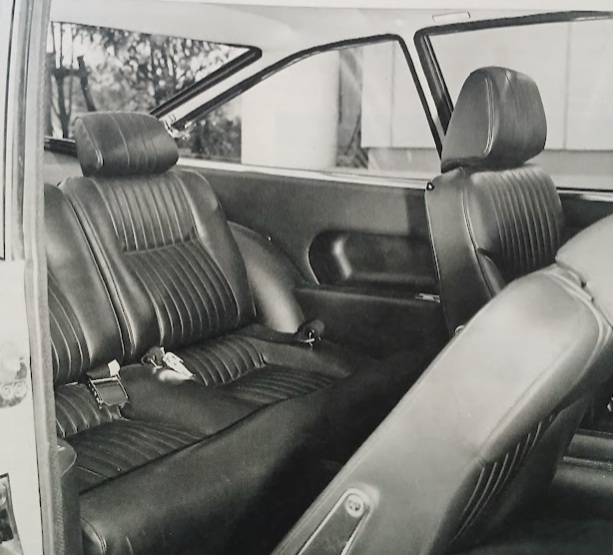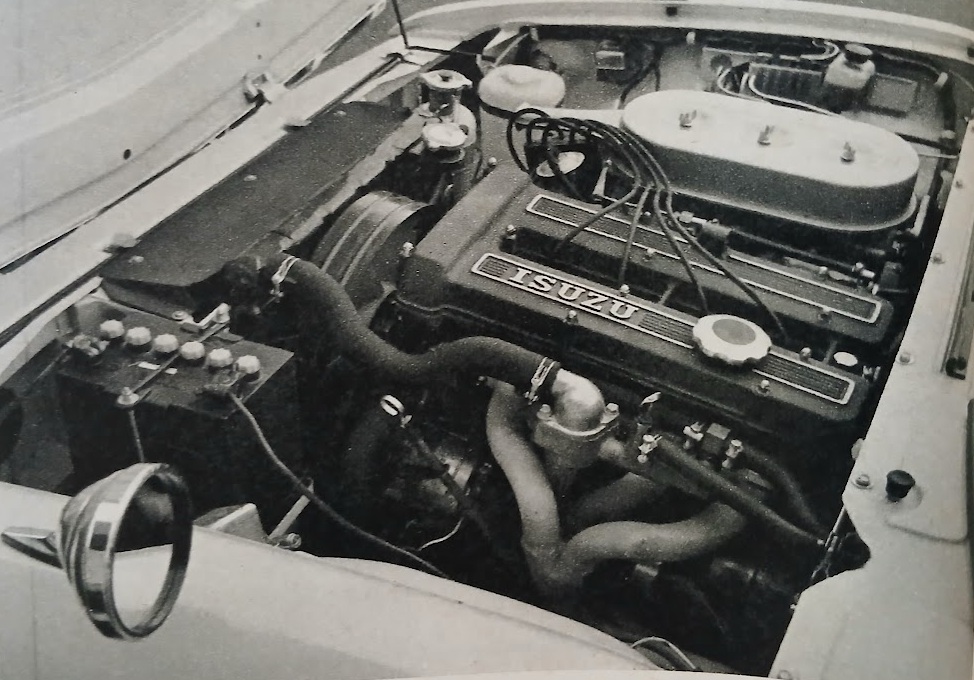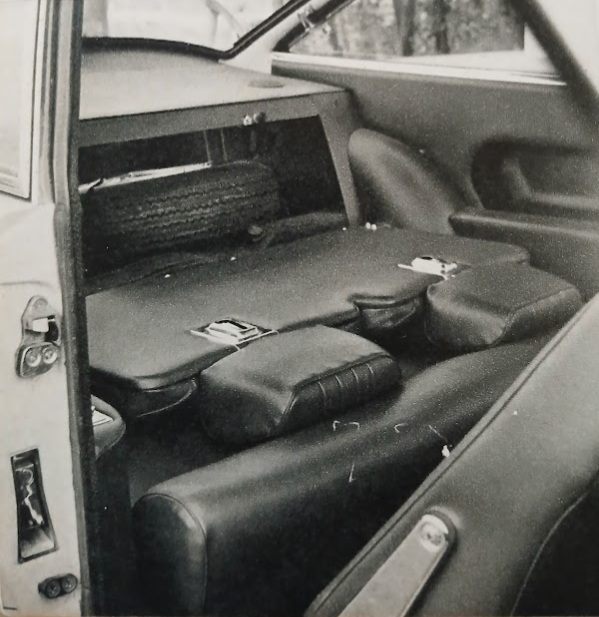Isuzu 117 Coupe (1970)
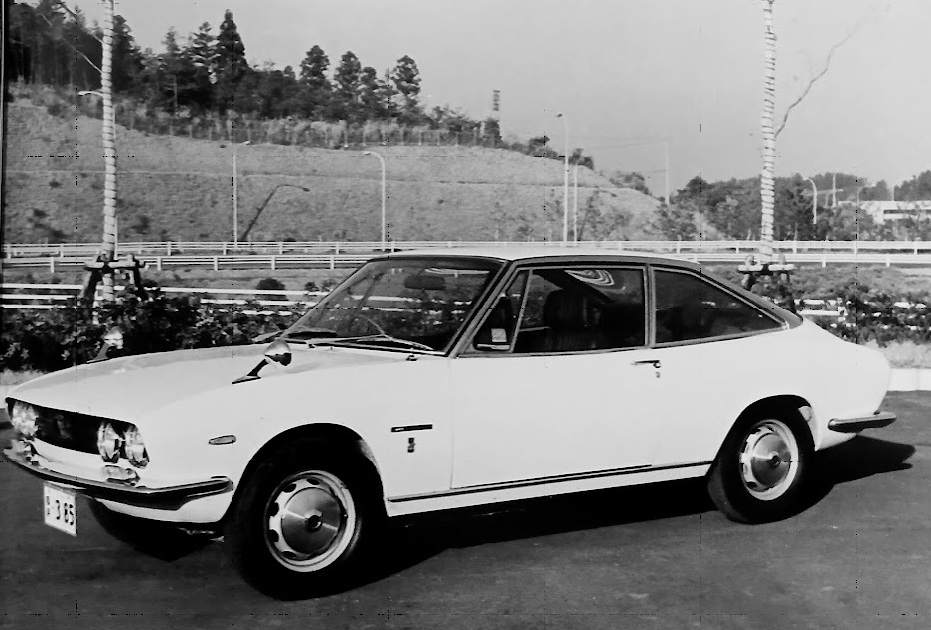
Publication: Car Graphic
Format: Road Impressions
Date: January 1970
Author: “C/G Test Group” (uncredited)
Road testing the Isuzu 117 Coupe
The Isuzu-Ghia Design 117 Coupe, which debuted at the Tokyo Motor Show two years ago, initially gave no indications of going into production, raising concerns that it would be a mere show model destined for a brief, beautiful life. However, looking back, we can see that an intense development process had been quietly and tirelessly continuing behind the scenes over the past two years. Having thoroughly tested the now-released Isuzu 117 Coupe over a 500km drive, we realized that the two-year wait was not in vain. Some manufacturers reluctantly release vehicles when are still in the “prototype” stage of development due to demands from their sales departments. Others fearlessly declare that they would not hesitate to buy such a car immediately after its release. However, the attitude of the people involved in the design and production of the Isuzu 117 Coupe is different, and in a sense, conscientious. Until their conscience as engineers had convinced them, they refused to put a “half-baked” car into production, no matter how strong the demands of the sales department.
The test car was chassis No. 18, a very early production model with a pale yellow body and a subdued dark blue interior, which had already been driven about 3,250km. To get straight to the point, we can confidently say that the Isuzu 117 ranks among the world’s top 1600cc class four-seater coupes, taking into account all aspects of its performance, handling, ride comfort, and interior space.
First of all, the power performance is excellent by any standard. The DOHC 1584cc engine has a compression ratio of 10.3, is equipped with two Solex double choke carburetors, and produces 120ps at 6400rpm and 14.5kgm of torque at 5000rpm. Looking at the specs, it appears to be a very “hot” engine, but in reality it is extremely flexible, and is surprisingly easy to use both in crowded city streets and on the highway. Many Japanese four-cylinder engines, even with DOHC and five bearings, are unfortunately still rough at high speeds, but this 117 engine revved lightly and smoothly up to 7000rpm, with little noticeable vibration.
On Japanese roads, absolute maximum speeds have little practical meaning, but our test car not only easily reached 185km/h on the speedometer (at an engine speed of about 6300rpm), but also maintained that speed for several kilometers. There are two final drive ratios (4.11 standard, 3.73 optional); our test car had the 4.11, and was fitted with Dunlop Grand Speed GS1 Mk II 6.45H-14-4PR tires. While the catalog maximum speed of 190km/h corresponds to a calculated engine speed of 7000rpm, the bias-ply tires’ diameter increases by about 7% at high speeds, so a speed of 190km/h would actually be reached at about 6700rpm (though doing so apparently requires removing the air cleaner, which of course was left in place during our test). The rev counter’s yellow zone is 6400-7000rpm, and the red zone is 7000-8000rpm. At top speed, the engine is almost at the red zone, but there’s still room for improvement in terms of intake/exhaust efficiency and valve mechanism, suggesting that it could achieve another 5km/h on a downhill slope. The engine is quiet and vibration-free at all speeds. A technical editor from the English magazine Autocar, Mr. Howard, who happened to be in Japan for an interview, also accompanied us on the test run, and we took turns behind the wheel. He stated that the car’s engine was much smoother than the Lotus-Ford DOHC.
However, when the test vehicle reached a speed of about 155km/h, vibrations began to appear in the drivetrain, which disappeared as the speed increased, but reappeared at 180km/h. These vibrations did not disappear even when the gear lever was in neutral, so the engine was not the cause. Also, the steering wheel did not vibrate, so it was not due to an imbalance in the front wheels. The most likely causes were thought to be an imbalance in the propeller shaft or the rear wheels.
For the Isuzu 117, 150km/h is a perfectly reasonable highway cruising speed: the engine speed is only about 5400rpm, and the aerodynamic body produces minimal wind noise, so the noise level inside the car is low enough that you can converse with the person next to you in a normal voice. Moreover, the directional stability is so excellent that you can let go of the steering wheel without feeling anxious, which is quite different from the tension you’d feel letting go at 100km/h in a regular sedan. We drove continuously for about 20 minutes at speeds of 140-180km/h, and the water temperature remained at a constant 80°C, and the Dunlop GS1 tires (set to the recommended high-speed air pressure of 1.8kg/cm²) only warmed up slightly. However, the oil pressure, which initially stood at 6kg/cm², dropped to 4kg/cm² after 10 minutes of driving at these high speeds. The manufacturer recommends installing the optional oil cooler for circuit driving and other extreme uses.
Acceleration performance is exceptionally high for a 1.6-liter luxury coupe. The manufacturer claims that the 117 can sprint from 0-400m in 16.8 seconds with four people on board. This wasn’t a formal road test, so performance measurements weren’t taken, but intuitively, this time seemed like it would be easy to achieve. The engine doesn’t have the raw feeling often associated with high-performance units, and with a weight of 1050kg, starting away from a standstill isn’t particularly impressive. However, as the surrounding cars rapidly become smaller in the rearview mirror, it actually demonstrates tremendous acceleration.
The gearbox is clearly very well-matched to the engine characteristics and vehicle weight, and if you push the engine up to 6400rpm, where the yellow zone begins, you’ll reach 94km/h in second gear and 140km/h in third. Shift feel is good and the synchromesh is effective, but unfortunately the gearbox produces a slight grinding noise and the gear shaft vibrates slightly above 5000rpm. Given the exceptionally low overall noise level, the gearbox sounds particularly noisy, which is a real shame. It would be nice if they’d put in a bit more effort here. The clutch is equipped with a helper spring, requires little effort to press, and engages very smoothly.
Another advantage of this engine is that it generates strong torque over an exceptionally wide range of revolutions. Looking at the torque curve, you can see that it delivers 90% of its maximum torque from 2500rpm to 6000rpm. What this means on the road is that, in top gear, it runs smoothly and effortlessly at 40km/h, accelerates powerfully from 50km/h onwards, and responds clearly to throttle even at speeds of 140km/h. In particular, the power reserve between 120 and 140km/h is so great that it’s hard to believe it’s a car with only a 1.6-liter engine. For this reason, an overdrive fifth gear would have been even better to allow economical highway cruising.
The engine remained in good condition throughout the 500km test. Also, cold starts were a breeze with just a pull of the choke, and within a few minutes the engine will idle at a steady 700rpm. It pulls powerfully even when you drive straight away from a cold start. If you encounter a long traffic jam, the idle becomes a little rough (though the water temperature remains unchanged), but the engine doesn’t stall.
We were just as impressed with the handling as we were with the power performance. The easiest way to test a car’s maneuverability is to drive up and down Hakone’s winding roads at high speed. In this kind of driving, the Isuzu 117 is almost comparable to the Fiat 124 Coupe, which previously achieved very good marks in our testing. This opinion is not just unanimous among the C/G test group; it was also fully shared by the accompanying Autocar road testers. Incidentally, the Fiat 124 is recognized worldwide as a leader in maneuverability among rigid-axle-suspended road cars. Furthermore, while the Fiat we tested benefited from Pirelli radial tires, the Isuzu was fitted with bias-ply Dunlop GS1s. In fact, these tires, which are low-profile H-spec (high-speed type, capable of a continuous 175km/h), are a perfect match for the Isuzu 117’s high potential performance. With the specified 1.8kg/cm² pressure, they handled everything from continuous driving at 140-180km/h to high-speed cornering with ease, and the 117’s handling was very smooth with a slight understeer that continued up to high speeds.
The steering remains just the right weight (or perhaps we should say lightness) regardless of speed. The steering system is highly rigid and extremely responsive. It takes about three turns from lock to lock, and there’s practically no play, so it feels extremely sharp. What’s more, it effectively blocks kickback from the road surface, and it’s particularly noteworthy that even on rough roads, there’s almost no reaction transmitted to your hands. The Dunlop GS1 tire compound is quite hard, and depending on the suspension to which it is matched, this tire can feel quite bumpy, but on the Isuzu 117, this has been cleverly eliminated. Even with stiffer radial tires (165HR-14s are optional), the low-speed shock typical of radial tires should barely be noticeable with this suspension.
The roadholding is so good that it’s hard to believe the suspension is just a conventional layout (coils and double wishbones in the front, rigid axle supported by semi-elliptical leaf springs and torque rods in the rear). Roll in corners is moderately suppressed, and the Dunlop GS1 tires’ grip holds up surprisingly well. It was particularly amazing that the rear wheels’ grip was barely affected in corners with broken, uneven road surfaces, and that the car’s posture was not disturbed. It seems that, even with a rigid axle, tuning the springs and dampers (a gas-filled de Carbon type in the 117’s case) can produce an effect that would be difficult to achieve with a poorly-tuned independent suspension. The 117 clearly demonstrates this, with its cornering attitude being extremely stable even under harsh conditions, and the driver clearly feeling the inside rear wheel gradually lose grip, making it easy to maintain good control with the steering and throttle.
It’s generally accepted that when you combine a rigid axle with a focus on handling, ride comfort inevitably has to be sacrificed. However, the Isuzu 117 bucks this conventional wisdom, offering an excellent ride on almost any road surface, and at any speed. “Soft” isn’t the right word to describe it, but it’s by no means stiff, either. The suspension absorbs minor imperfections well, so even when you go over an embedded street track, for example, you only hear the bump, rather than feeling a shock. Even at low speeds around town, the ride is almost as good as a regular sedan, but of course the settings are primarily aimed at high-speed driving, and the smoothness at speeds above 100km/h is particularly noteworthy.
On the other hand, this beautiful coupe is surprisingly good at traversing extremely rough, unfinished roads. As an experiment, we drove it over unpaved roads that would have made us hesitate a little to exceed 60km/h, but with a ground clearance of 180mm, the coupe didn’t exhibit any apparent strain, although the occupants were shaken up and down violently. The strength and rigidity of the body felt extremely high despite the large window area, and even when it was handled roughly like this, no abnormal creaking or flexing was detected.
The 117’s braking capabilities also allow the car’s high power performance and maneuverability to be demonstrated without worries. The brakes are of the highest specifications, with Dunlop Sumitomo 35-type opposed-piston discs in the front and leading-trailing Alfin drums with cooling fins at the rear, and of course, a tandem master cylinder and vacuum servo. It goes without saying that they are powerful, but the servo effect is also just right, and they work gradually according to the amount of pressure you apply to the pedal, giving a pleasant feeling. The braking force between the front and rear wheels is well balanced, and when you apply the brakes suddenly, all four wheels feel like they are gripping the road together, with little nose dive. Another plus is that there is almost no disc “squeal.”
The interior is truly luxurious and functionally well laid out, and the overall atmosphere is filled with luxury and elegance comparable to that of a high-end British sports sedan, such as a Jaguar. The driving position is excellent. The reclining seats with height-adjustable headrests are well-shaped, the cushions have just the right amount of “give” and support, and there is ample lateral location even without using the standard three-point seat belt. Furthermore, the sides of the center console are ideal for supporting your body by bracing your legs against it. The position and angle of the slightly thick wood-rimmed steering wheel are ideal; it is just low enough not to obstruct your forward field of vision, yet does not interfere with reading the instruments. The pedals are well-placed, allowing heel-and-toe braking and double-clutching to be performed very naturally. The pedal forces are light enough for repeated use around town, with no problems. The gear lever is short and vertical, and positioned so that your hand naturally drops onto it when lowered from the steering wheel.
The instrument panel is beautiful, made from real Taiwanese camphor wood, with the rev counter and speedometer placed front and center, and the water temperature, oil pressure, fuel, and ammeter gauges neatly arranged to the left. All have white markings on a black background with red pointers, making them easy to read, especially at night. The only drawback is that the rev counter and speedometer scales are a little too fine, making them difficult to read instantly. We think the markings could be a little more widely-spaced. The frequently used light and wiper switches are located on the instrument panel, but are a little far from a natural driving position. It seems that recent safety-conscious designs require long arms.
The front sets offer ideal accommodations, allowing for comfortable and enjoyable long highway trips. In contrast, the rear seats are somewhat insufficient for two adults traveling long distances. There’s just barely enough headroom and legroom, and while they seem comfortable if you’re sitting bolt-upright, it’s difficult to find a comfortable position to relax into (unless you move the front seats quite far forward). In this respect, the Fiat 124 Coupe, which has almost identical exterior dimensions, is superior. The rear seat backrests can be tilted in three steps, and when folded fully forward, the rear cabin connects with the trunk, creating a spacious luggage compartment (though the backrest adjustment brackets are difficult to use, and should be redesigned). The trunk, like the interior, is fully carpeted, allowing for safe storage of delicate items. However, the opening is narrow, and the large spare tire sits on the floor, taking up about half the space, so unless you’re brave enough to leave the spare in the garage, you can’t fit large luggage inside. Of course, it can easily fit the two or three large suitcases needed for two people on a long trip.
Naturally, the 117 Coupe is equipped with a modern heater and ventilator. It also has a warm air outlet for the rear seats at the rear of the center console. A control on the center console allows you to switch between airflow for both the front and rear seats or just those in front. The heater blower has three speeds, and the windscreen has four defroster outlets, with the airflow direction adjustable. The rear window also has its own defogger, which draws in interior air and blows it onto the glass from two outlets. The direction of these can also be adjusted, and the rear side windows are supported by sturdy metal fittings that swing outward from their leading edges. Even when opened at around 80km/h, they do not draw in any air, are quiet, and provide extremely effective ventilation.
The interior finish is comparable to that of British luxury cars, and the safety design is also quite thorough, with almost no metal protrusions, and the ignition key is covered with anti-glare black plastic. In addition, a four-way flasher for use in case of a breakdown, which will be mandatory from next year, is already installed as standard. An AM/FM radio and power antenna are also standard, so you can enjoy music without turning up the volume too much even at 100km/h. The doors open wide, giving easy access to the rear seats. However, for the same reason, it’s easy for the door to hit the car next to it or the garage wall when opened. We wish there was a check to stop the door when open halfway.
I seems unlikely that those wealthy enough to afford this 1.72 million yen car will complain about fuel economy, but even in this respect, the 117 Coupe does quite well. Using its full performance during highway driving and hill climbing, we got 6.0km/l, and driving at a normal speed along the Tokaido Road, we got 9.5km/l, for a total average of 7.7km/l over a 500km distance. The fuel tank holds 58 liters, and the warning light comes on when the level reaches about 8 liters. During our test, the light also came on while cornering, so we filled up with about 18 liters remaining (the gauge was already at E). Oil consumption was so minimal that it was impossible to measure, even over 500km of high-speed testing.
For those fortunate enough to spend 1.72 million yen on a car, the Isuzu 117 Coupe will provide satisfaction that is well worth the price.
Postscript: Story Photos
